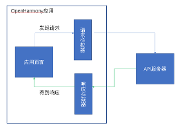【原创】RabbitMQ 之殇:聊聊 tracing 问题
背景
- 在当前架构的设计中,会基于 RabbitMQ 的 tracing 功能抓取经过 MQ 的消息,即使明确知道存在严重的性能问题(这个事情一直是我最为不满的槽点)
- 组内基于 shell 脚本实现 tracing 功能的使能和配置,但其中的处理逻辑让人看完就有一种“一定会存在问题”的预感,而这么实现的理由似乎是觉得其他方式更麻烦
当前脚本实现
start.sh
- 能够看到该脚本的最重要的功能是启动 RabbitMQ server
- 同时又看到,脚本中采用“后台运行”方式调用了 create_trace.sh 脚本
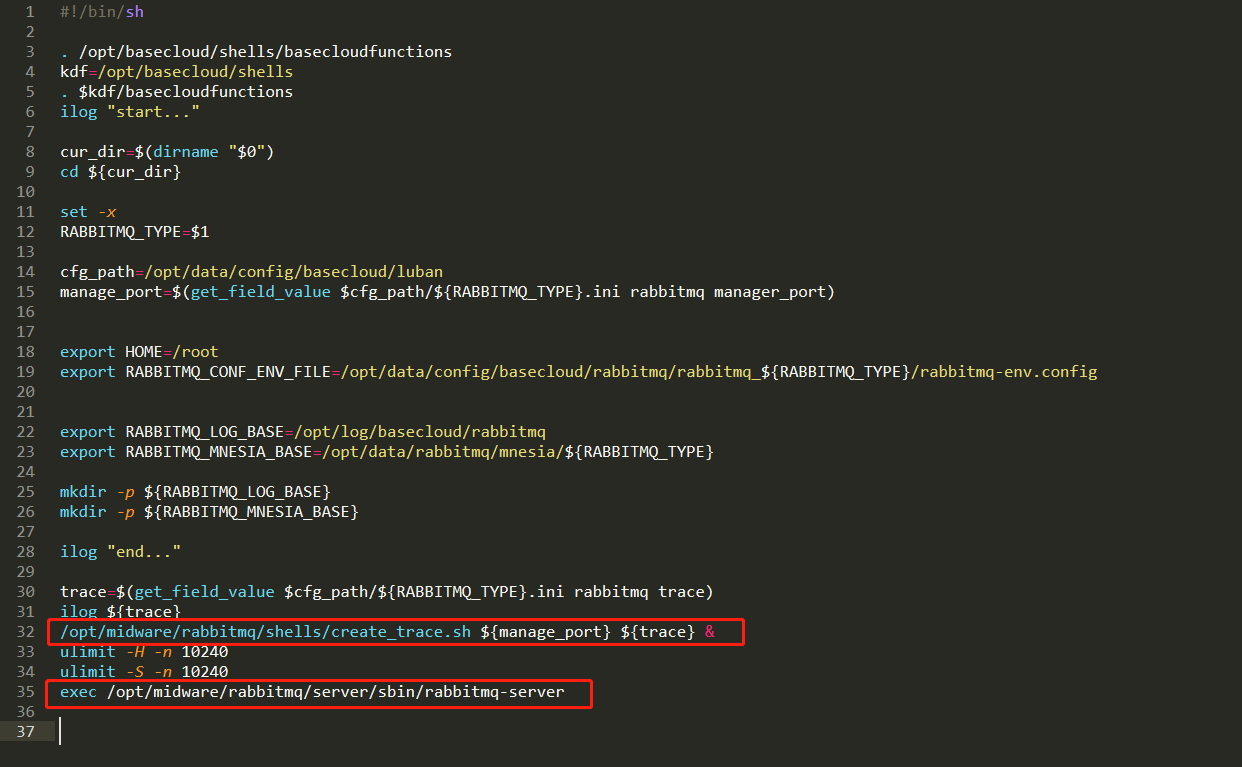
分析:
- 启动 rabbitmq 和创建 trace 明显是存在先后关系的
- 将创建 trace 放在用于启动 rabbitmq 的脚本中,并不合适
create_trace.sh
- 通过 sleep 30 延时来确保大部分情况下当前脚本会在 rabbitmq 启动后才被执行
- 通过 for 循环 + sleep 3 延时,确保 tracing 功能的启用,以及 trace 规则的建立
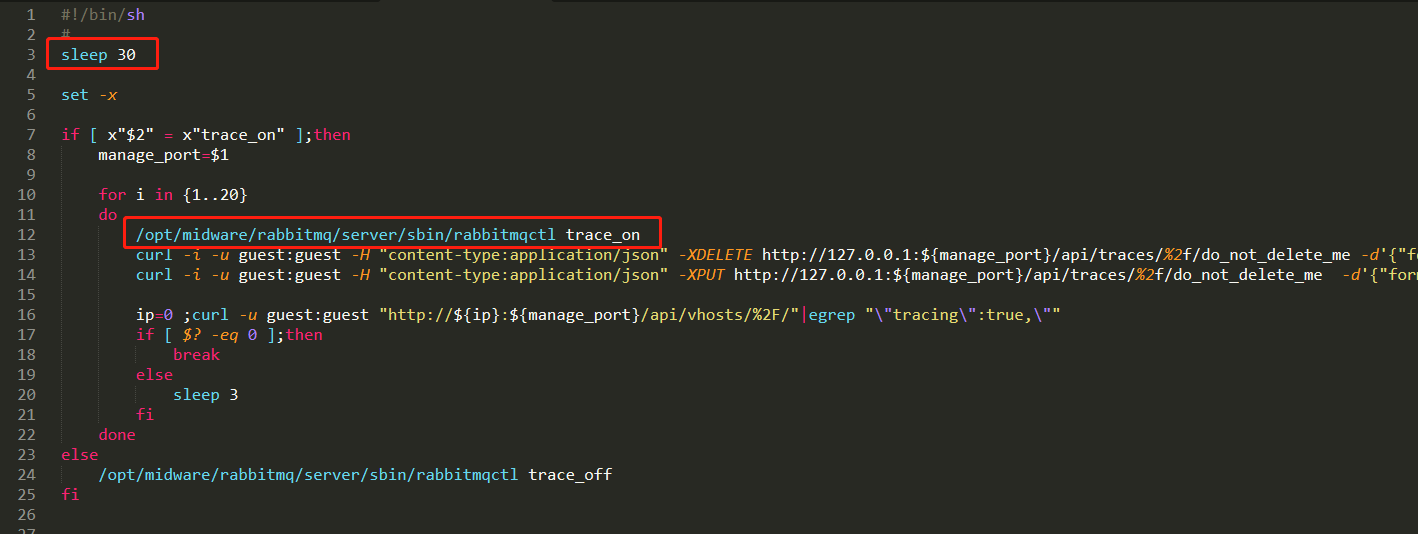
分析:
- 直观上看,这种实现是丑陋的
- 细节上,实现中的做法均属于“粗放式”策略,只能治标,不能治本;例如,假设 rabbitmq 完全启动需要大约 18s ,由于某种原因,rabbitmq 启动后就“挂掉”,之后再被重新拉起,反复N次;这种情况下,可能出现:
- rabbitmqctl trace_on 卡住
- curl 卡住
- for 循环结束后,tracing 功能依然启动失败,trace 规则建立失
使用 rabbitmqctl 访问一个不存在的 node ,确认命令的执行并未卡住
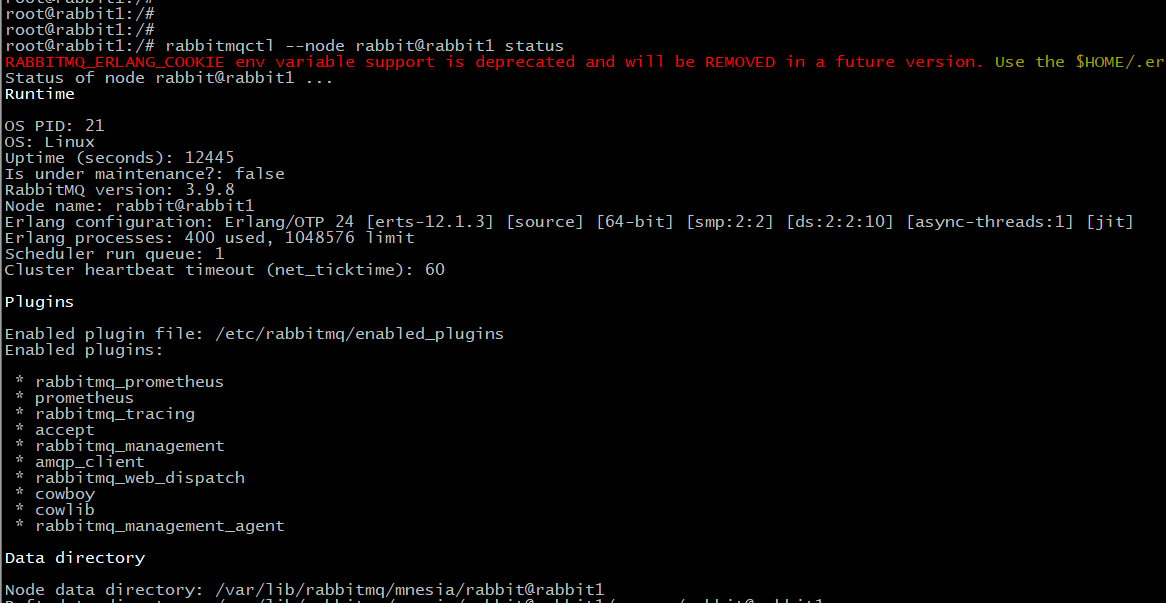
install.sh
- 主要是 enable 各种插件
- 之所以能够在安装脚本中使用,源于该命令同时支持 on-line 变更和 off-line 变更两种方式,即当 rabbitmq 尚未运行时,采用的是离线变更,等 rabbitmq 上线后即可自动加载新配置
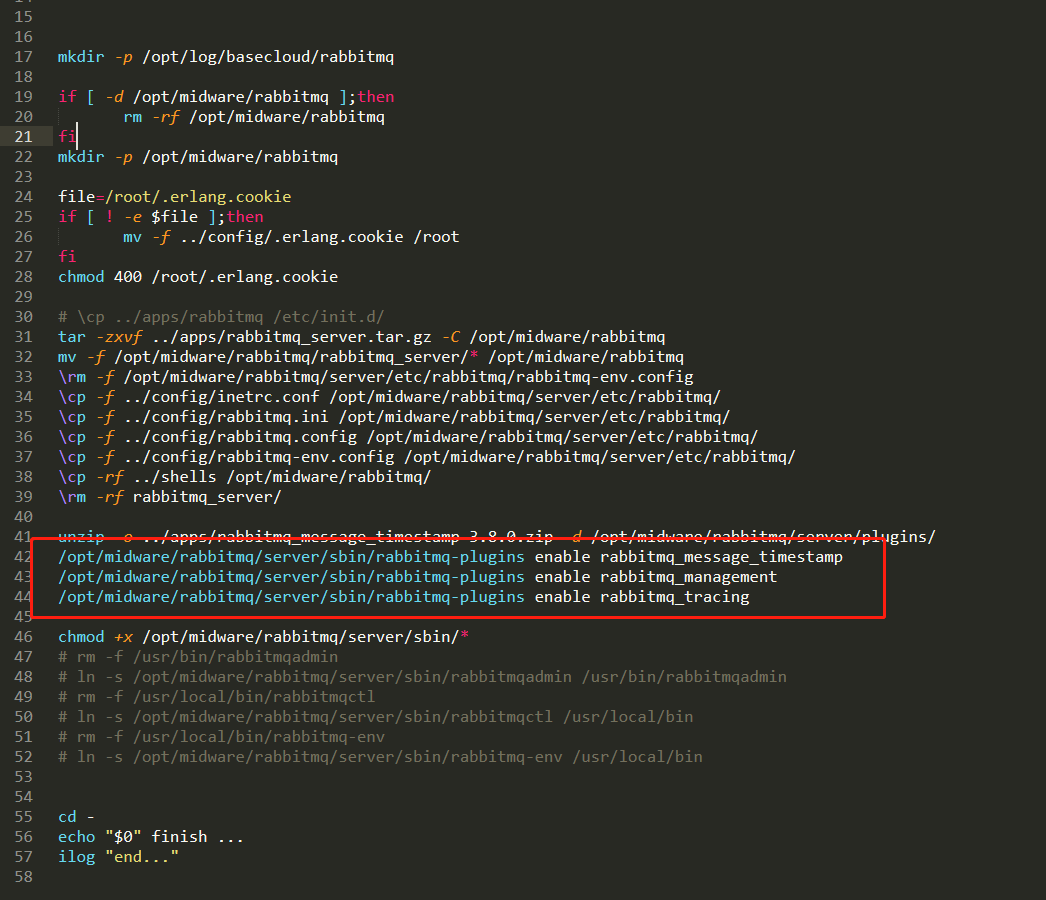
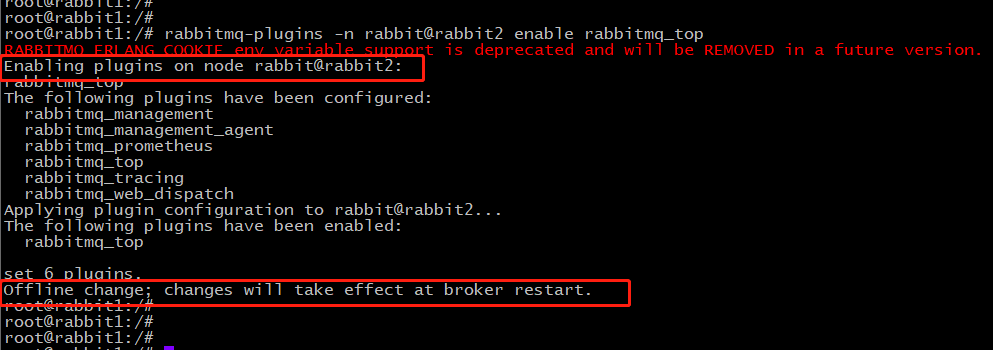
思考
- rabbitmq 支持的 tracing 功能的具体表现形式
- tracing 功能的使用场景
- 启用 tracing 功能后会导致的问题
- 使用 tracing 功能时最合理的配置和使能方式
- 关于 tracing 功能,我们还需要知道些什么
0x01 tracing 功能的具体表现形式
从以下几处信息可知
- firehose 是作为一个 feature 由 rabbitmq 内部直接提供的
- rabbitmq_tracing 是作为一个 plugin ,构建于 firehose 之上,提供了 GUI 并能够将 traced 消息写入日志文件
RabbitMQ has a "firehose" feature, where the administrator can enable (on a per-node, per-vhost basis) an exchange to which publish- and delivery-notifications should be CCed.



0x02 tracing 功能的使用场景
无论是针对 firehose 的介绍,还是基于 rabbitmq_tracing 插件的说明 ,均指出该功能仅适用于开发和调试阶段,以及开发和 QA 环境


0x03 启用 tracing 功能后会导致的问题
从 firehose 的角度

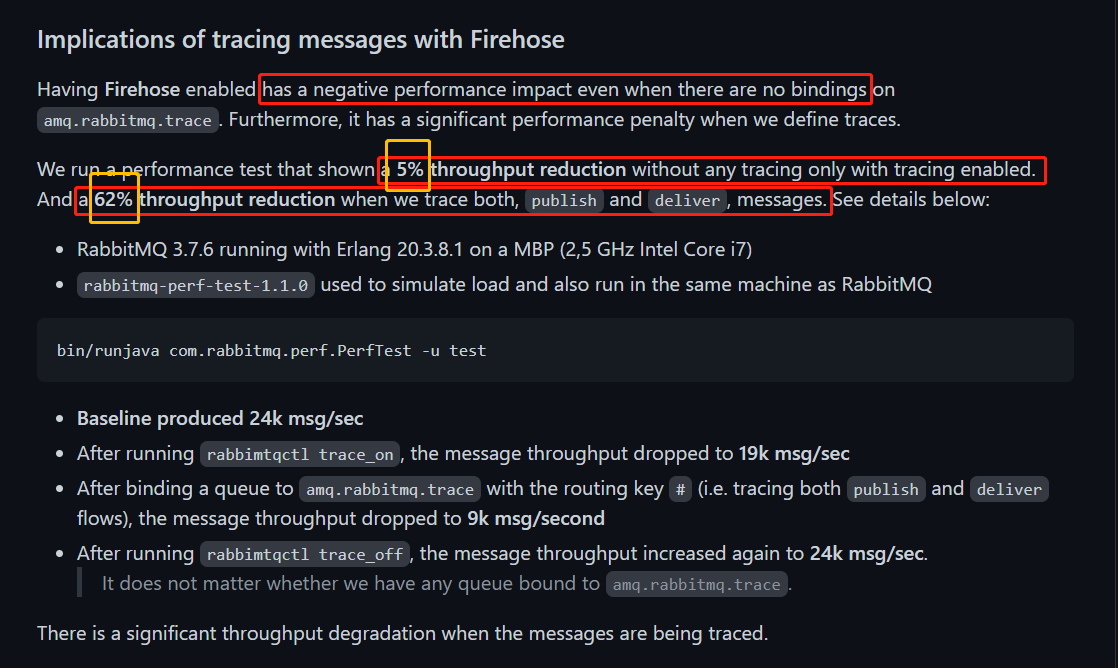
从 rabbitmq_tracing 的角度

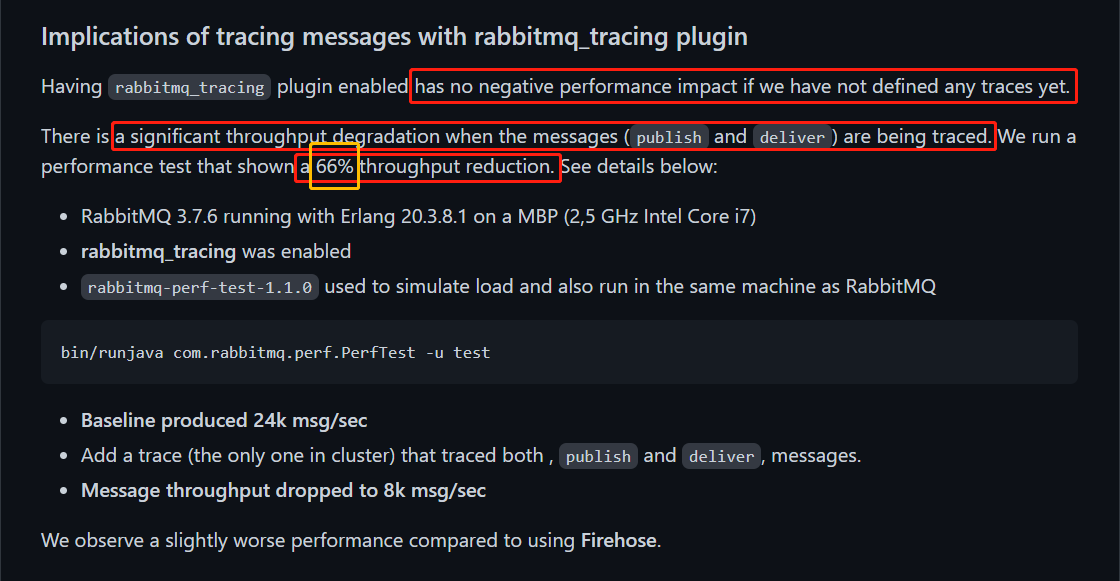
0x04 使用 tracing 功能时最合理的配置和使能方式
详见本文最后的“实验”内容
0x05 关于 tracing 功能,我们还需要知道些什么
- tracing 的“使能”状态不是持久化的,重启后,默认恢复到 off 状态
Note that the firehose state is not persistent; it will default of off at server start time.
- 如果在使能了 firehose 后,又使能了 rabbitmq_tracing 插件,则当管理员停掉最后一个 trace 规则(也可以说成 trace 实例)后,firehose 功能同时会被 disable
TL;DR If rabbitmq_tracing plugin is also enabled and the administrator stops the last Trace, it will disable Firehose tracing entirely in addition to stopping the Trace instance.
- 只要启用了 firehose 功能,就会造成性能影响,即使此时并没有使用起来
Having Firehose enabled has a negative performance impact even when there are no bindings on amq.rabbitmq.trace. Furthermore, it has a significant performance penalty when we define traces.
- 如果你的 tracing 功能是基于 firehose 使用的,则不要忘记手动清理你所创建的 queue
Don't forget to clean up any queues that were used to consume events from the Firehose.
- 可以基于管理页面或 HTTP API 在集群中的任意 node 上创建 trace 规则
It is now possible to set up a tracer on any cluster node via management UI and HTTP API.GitHub issue: rabbitmq/rabbitmq-tracing#24
- 针对插件的 enable ,可以采用 on-line 和 off-line 两种方式,建议采用基于配置文件的 off-line 方式
Plugins are activated when a node is started or at runtime when a CLI tool is used. For a plugin to be activated at boot, it must be enabled. To enable a plugin, use the rabbitmq-plugins.
The rabbitmq-plugins command enables or disables plugins by contacting the running node to tell it to start or stop plugins as needed. It is possible to contact an arbitrary node -n option to specify a different node.
Having a node running before the plugins are enabled is not always practical or operator-friendly. For those cases rabbitmq-plugins provides an alternative way. If the --offline flag is specified, the tool will not contact any nodes and instead will modify the file containing the list of enabled plugins (appropriately named enabled_plugins) directly. This option is often optimal for node provisioning automation.
实验
该实验的前提是“由于目前的架构设计,导致不得不利用 RabbitMQ 的 tracing 功能干一些xxx事情”,因此,这里要探究的是,组内目前的脚本编写是否合理;
操作流程如下:
- 基于 docker-compose 启动 2-node RabbitMQ 集群
- 通过
rabbitmqctl trace_off命令将 rabbit1 和 rabbit2 上的 firehose 功能关掉(默认就是关的,这里是为了加强一下这个条件) - 通过
rabbitmq-plugins disable rabbitmq_tracing命令将 rabbit1 和 rabbit2 上的 rabbitmq_tracing 插件去使能
rabbit1 上执行


rabbit2 上执行


从 rabbitmq 日志中可以看到

此时,从管理界面上看,节点 rabbit1 和 rabbit2 上显示的内容完全相同,以 rabbit1 为例


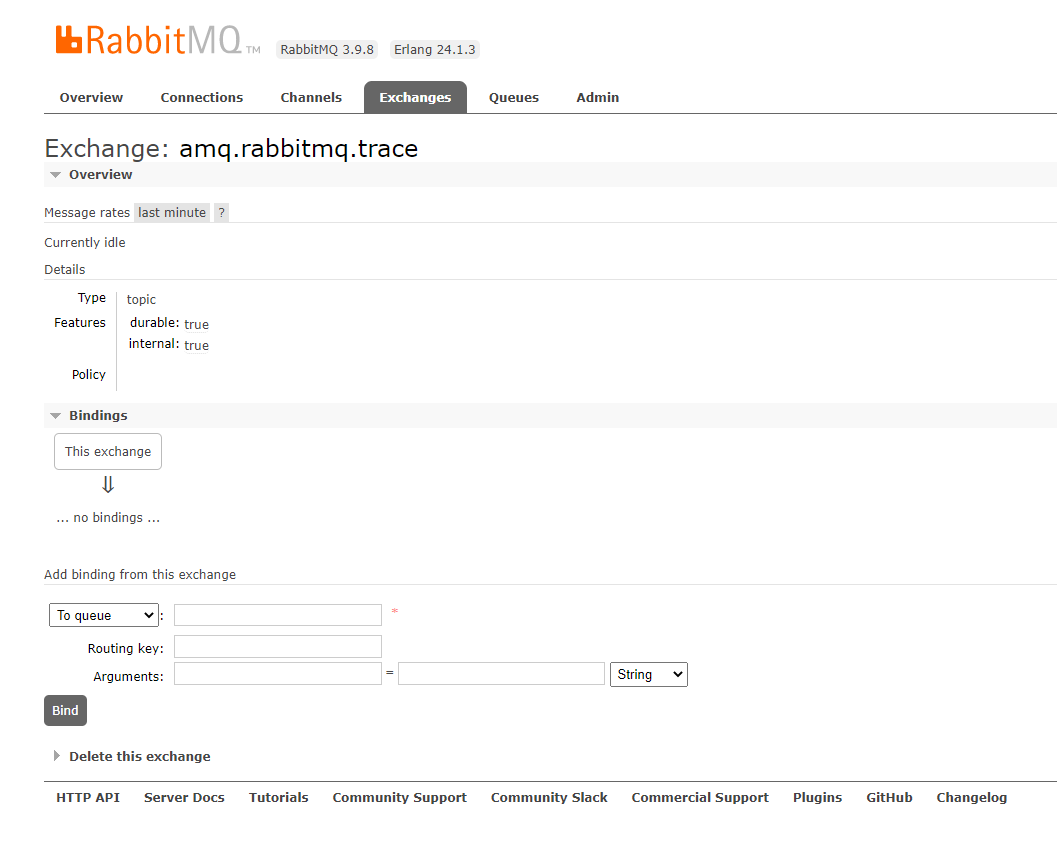
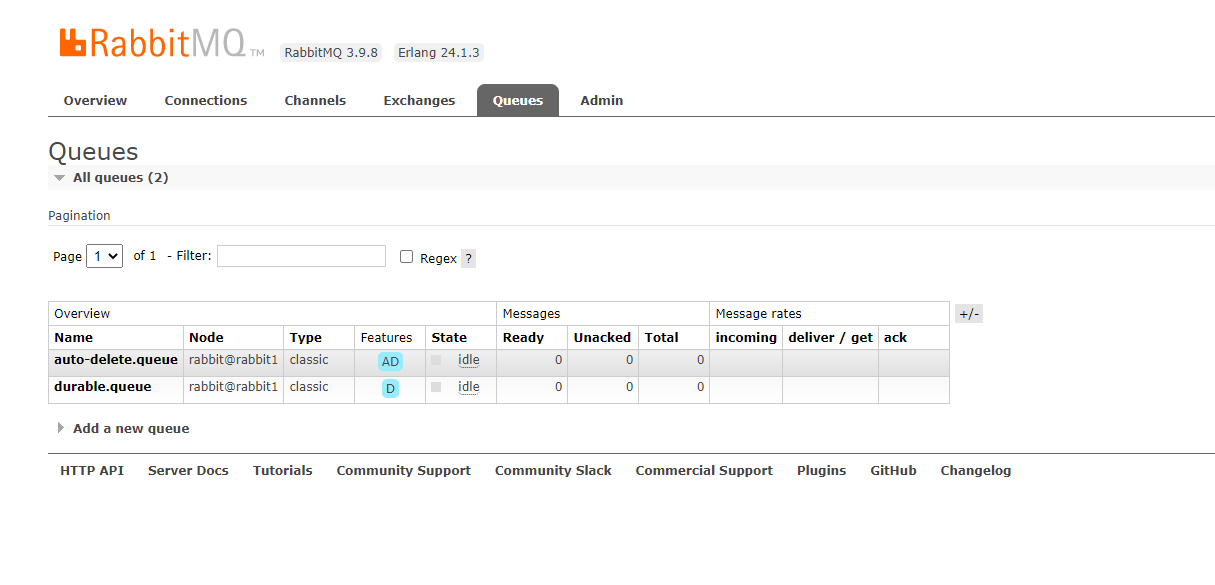
- 在 rabbit1 上 enable 插件 rabbitmq_tracing

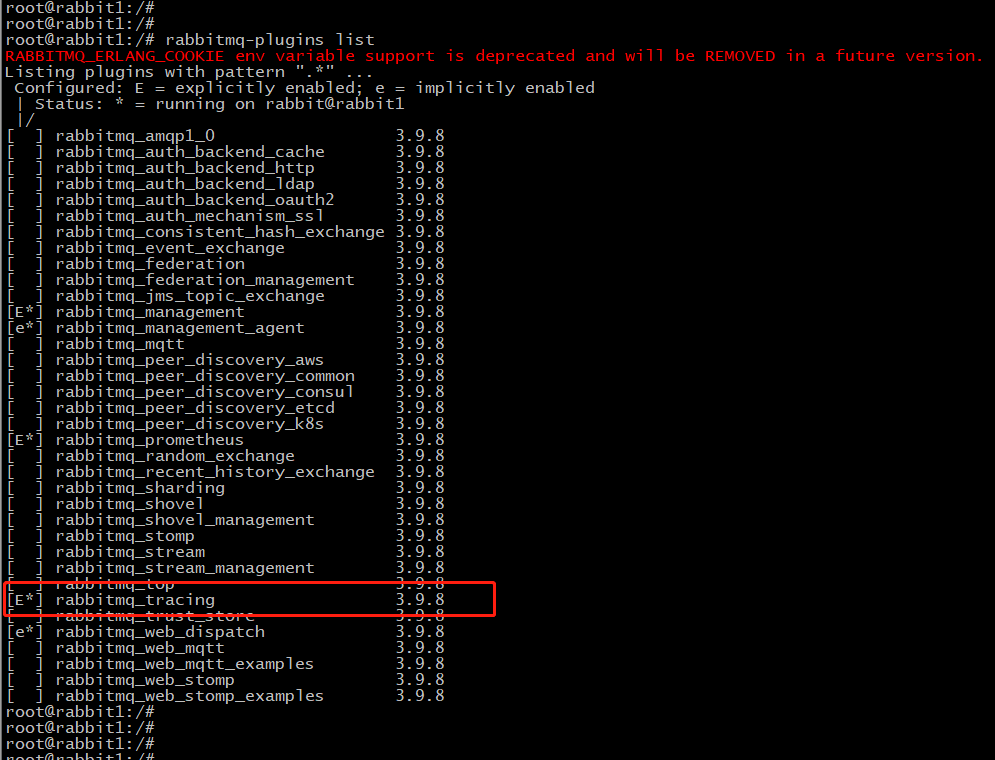
server 日志输出如下

此时,从管理页面上可以看到,rabbit1 比 rabbit2 多了名为 tracing 的 tab

确认 rabbit2 上的插件状态,没有变化
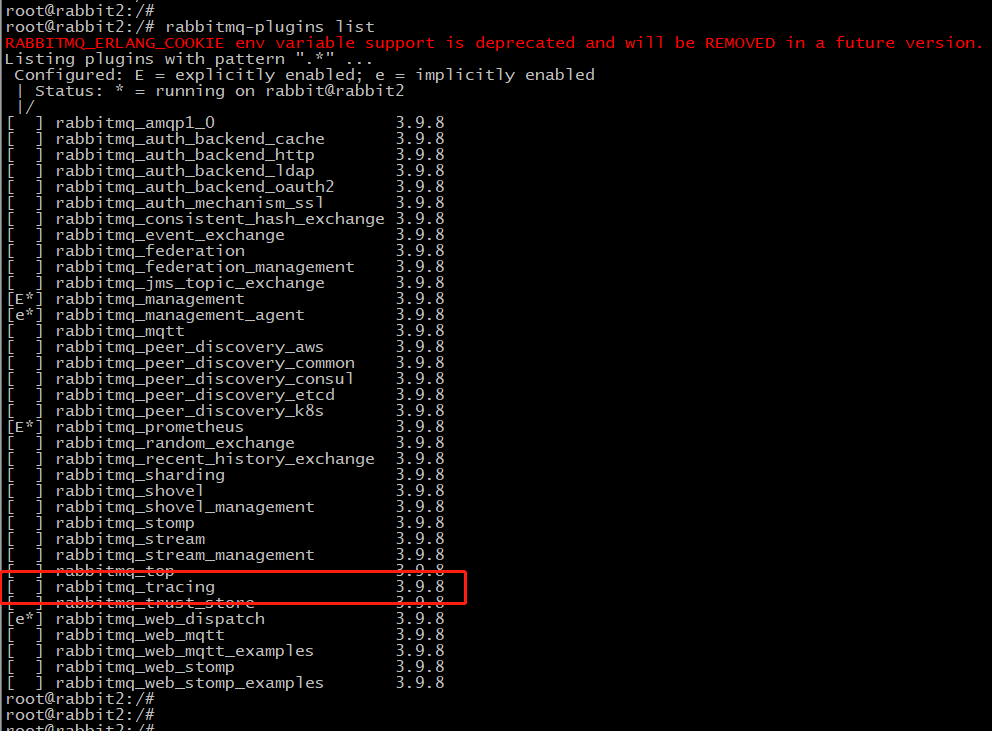
页面上也没有变化

- 通过 curl 命令确认 tracing 功能是否已处于使能状态(可以看到,此时 tracing 值为 false,说明仅使能 rabbitmq_tracing 插件并未将 firehose 特性启用)

- 通过 curl 创建 trace 规则

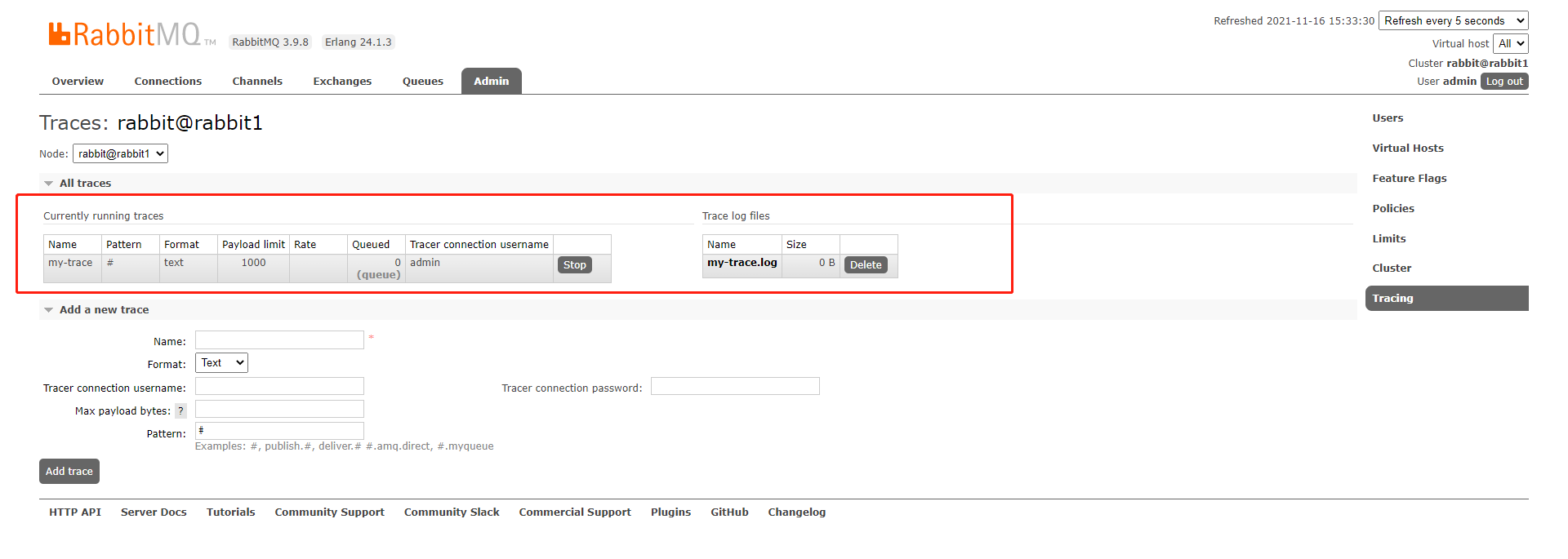
重新确认 tracing 状态,发现已经变成 true

从 server 日志中也可以看出,创建 trace 规则后,会自动使能 tracing 功能

- 确认创建 trace 规则后,还有哪些变化
- 会自动创建一个独占 queue ,并绑定到 amq.rabbitmq.trace 这个 exchange 上
- 会自动创建一个特殊的 consumer ,从上面的独占 queue 中消费
- 会自动创建一个 trace log 文件
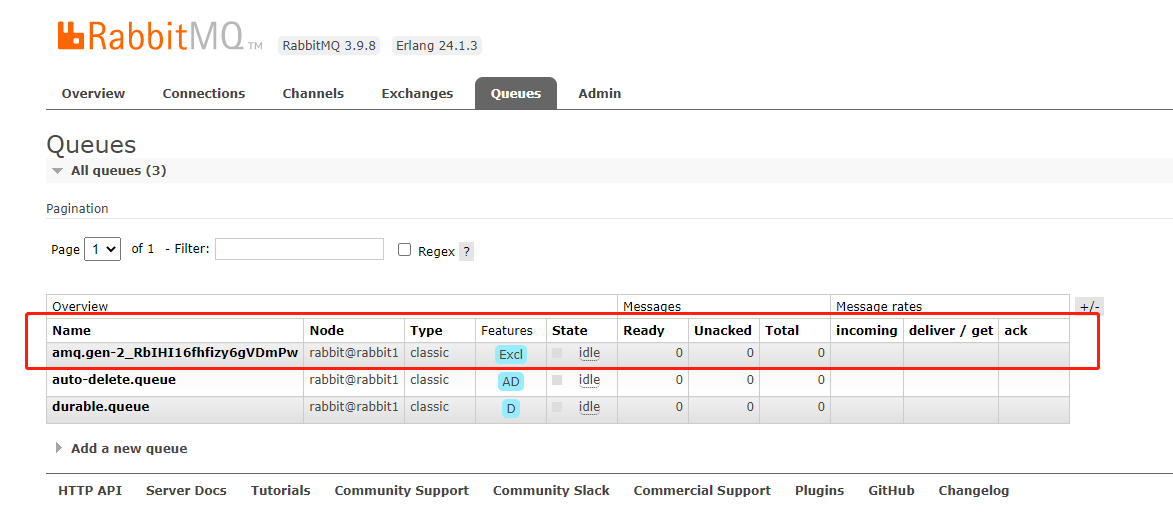
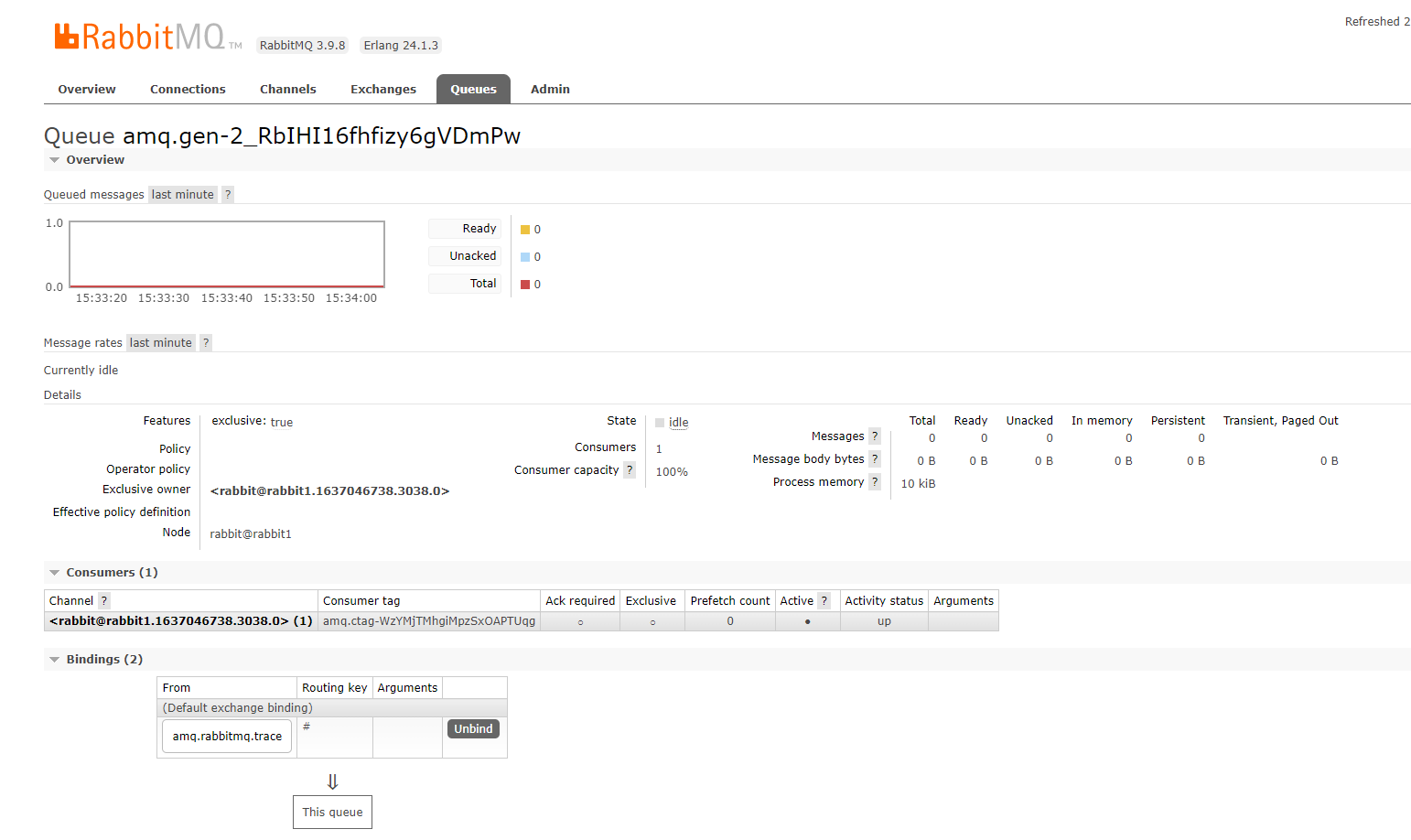
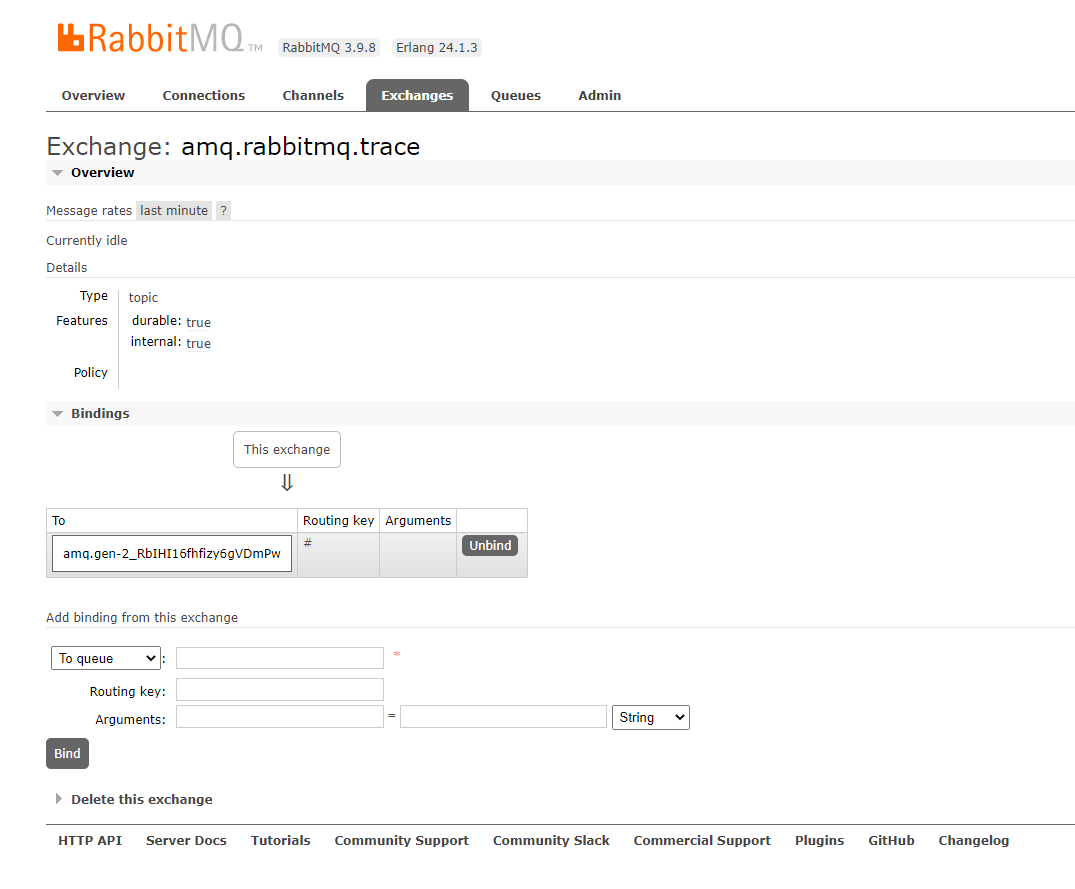

- 手动创建一个名为 xxxx 的测试 queue ,但不做任何 bind 操作,也不为其创建消费者
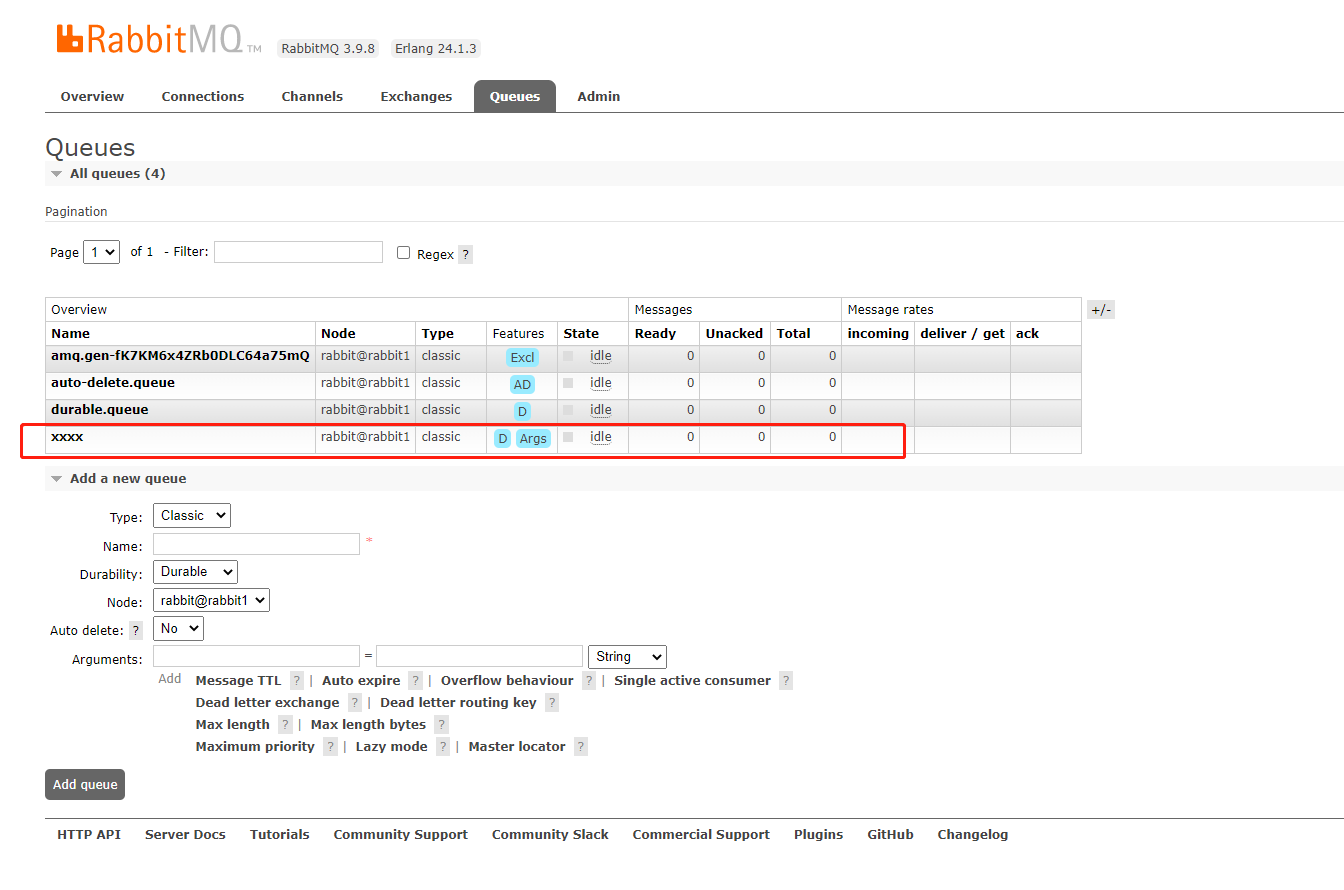
该 queue 状态如图所示
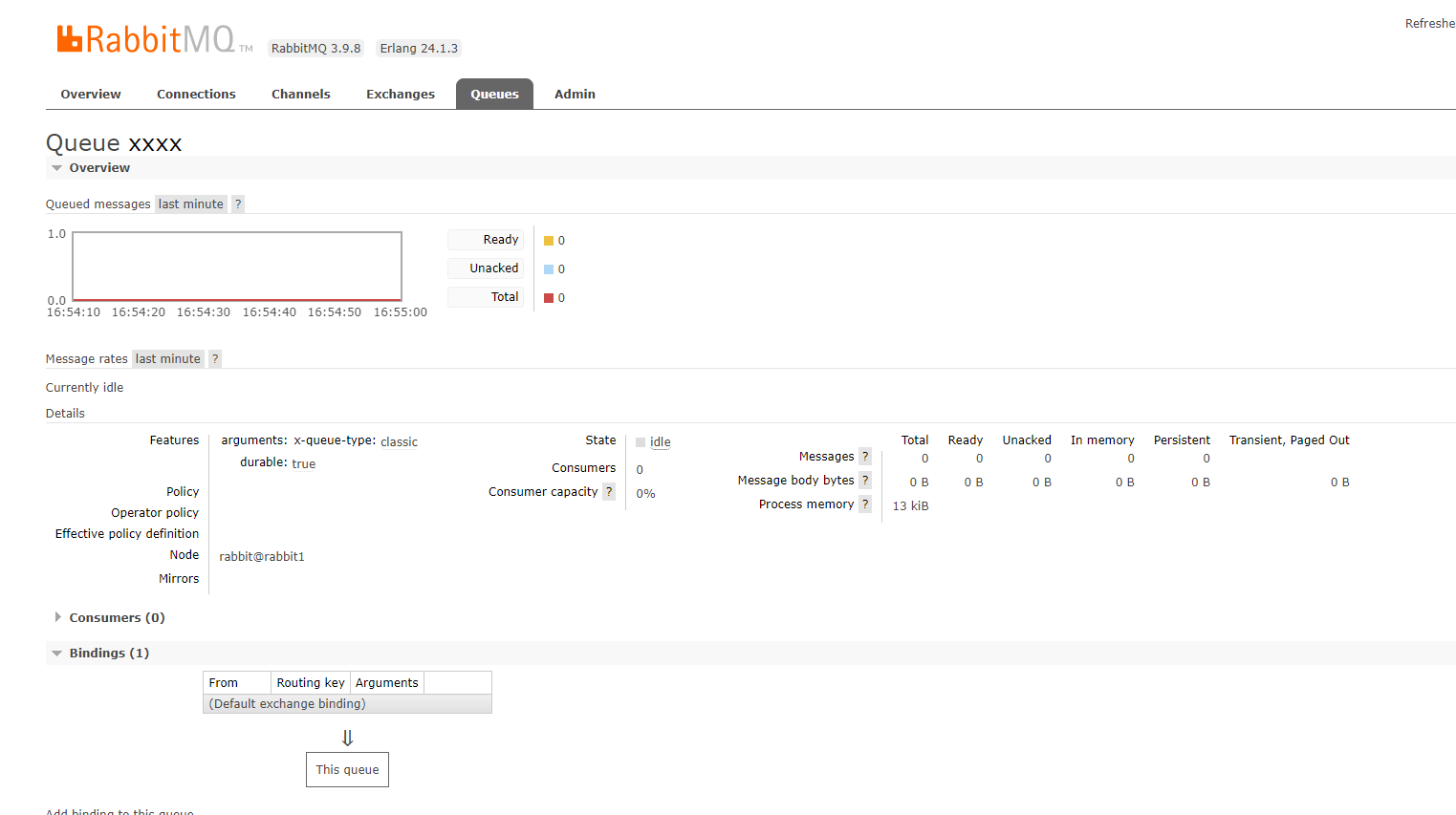
- 直接在管理页面上为该 queue 创建 trace 规则,可以看到,同样会像上面一样创建出所有的东西


- 手动发消息到 xxxx queue 中测试 tracing 功能
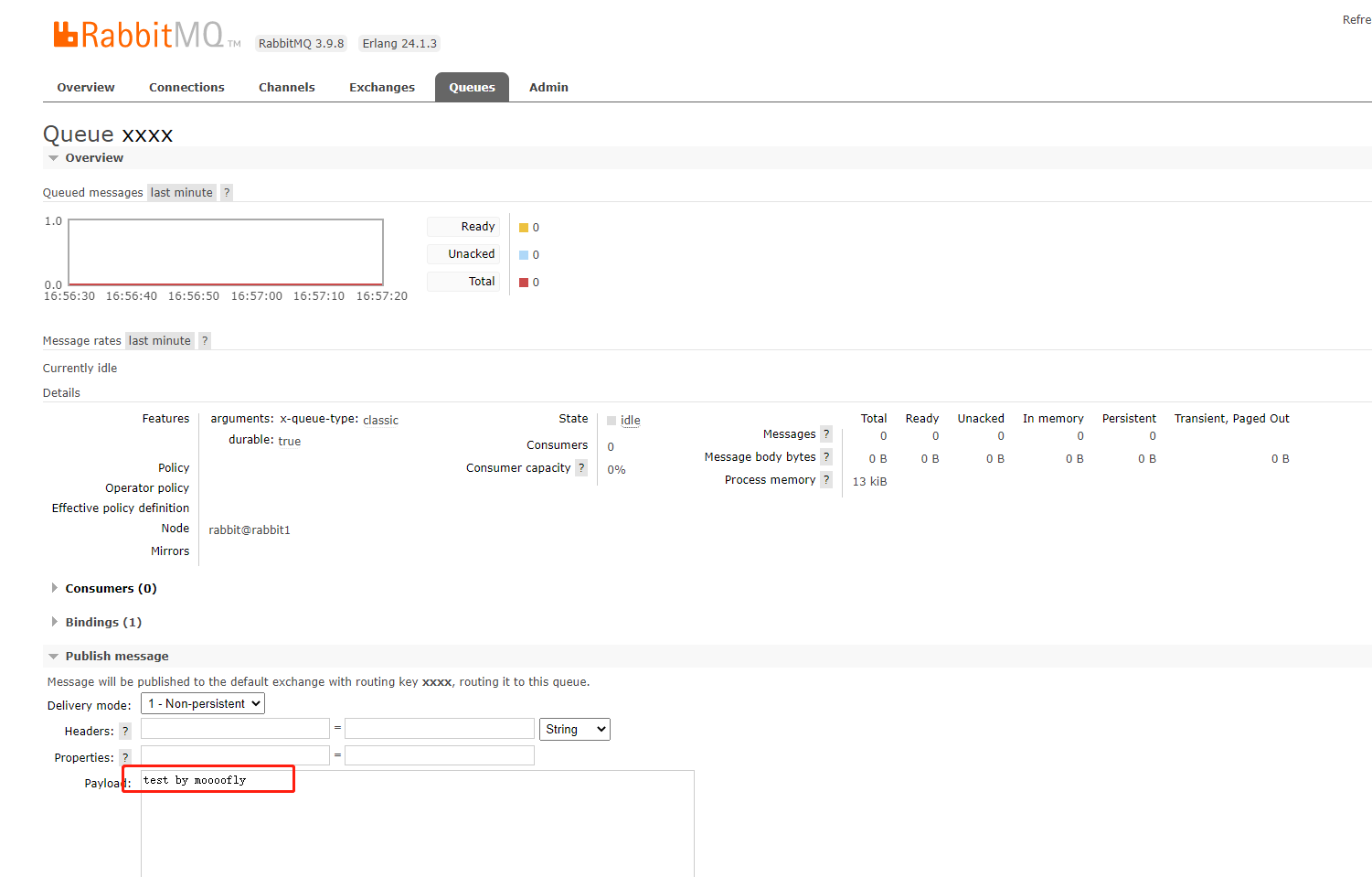
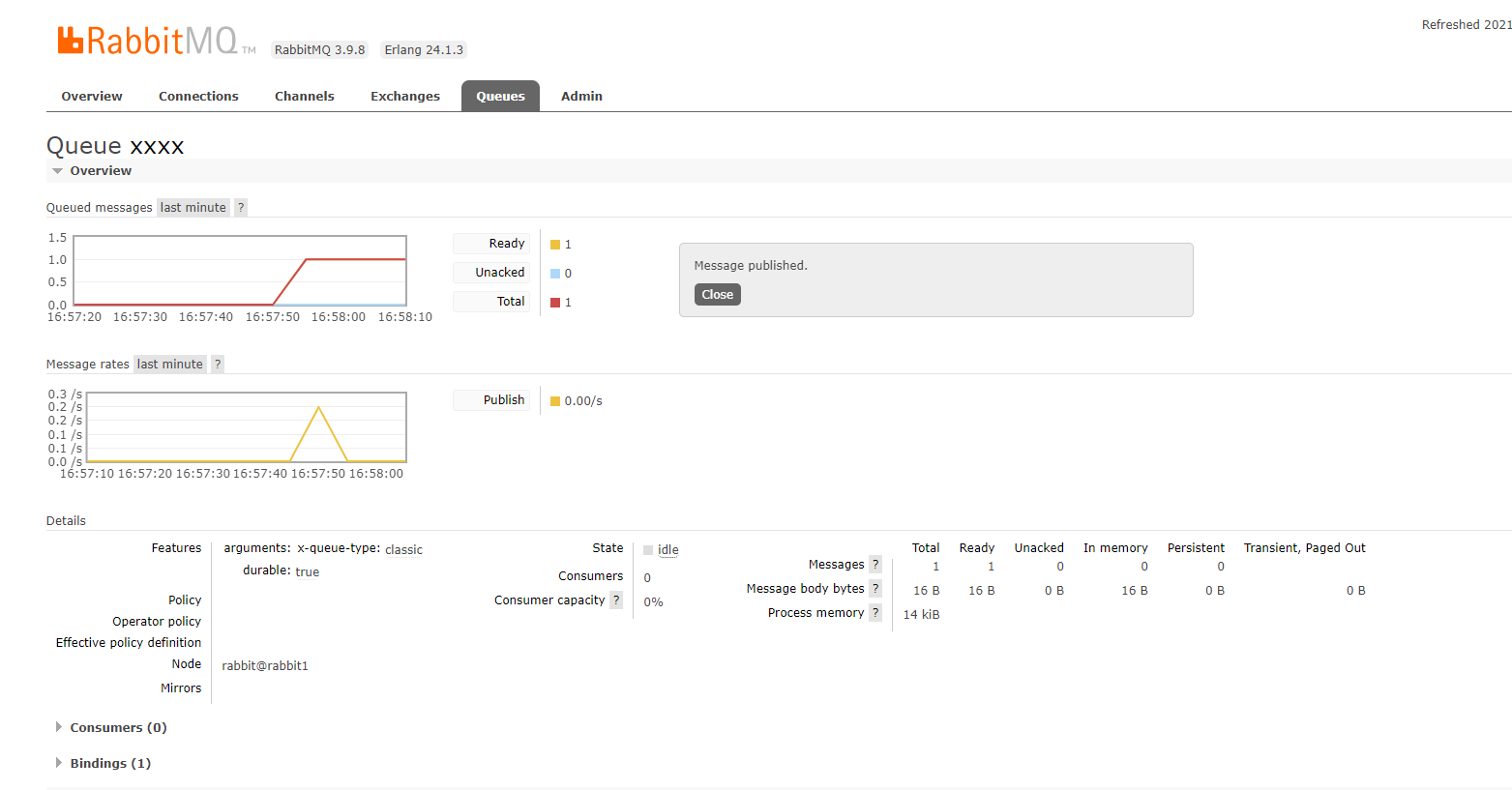
可以发现,trace 日志内容有了更新(这里由于 Pattern 配置的原因,trace log 仅被写入到了 my-trace.log 中)
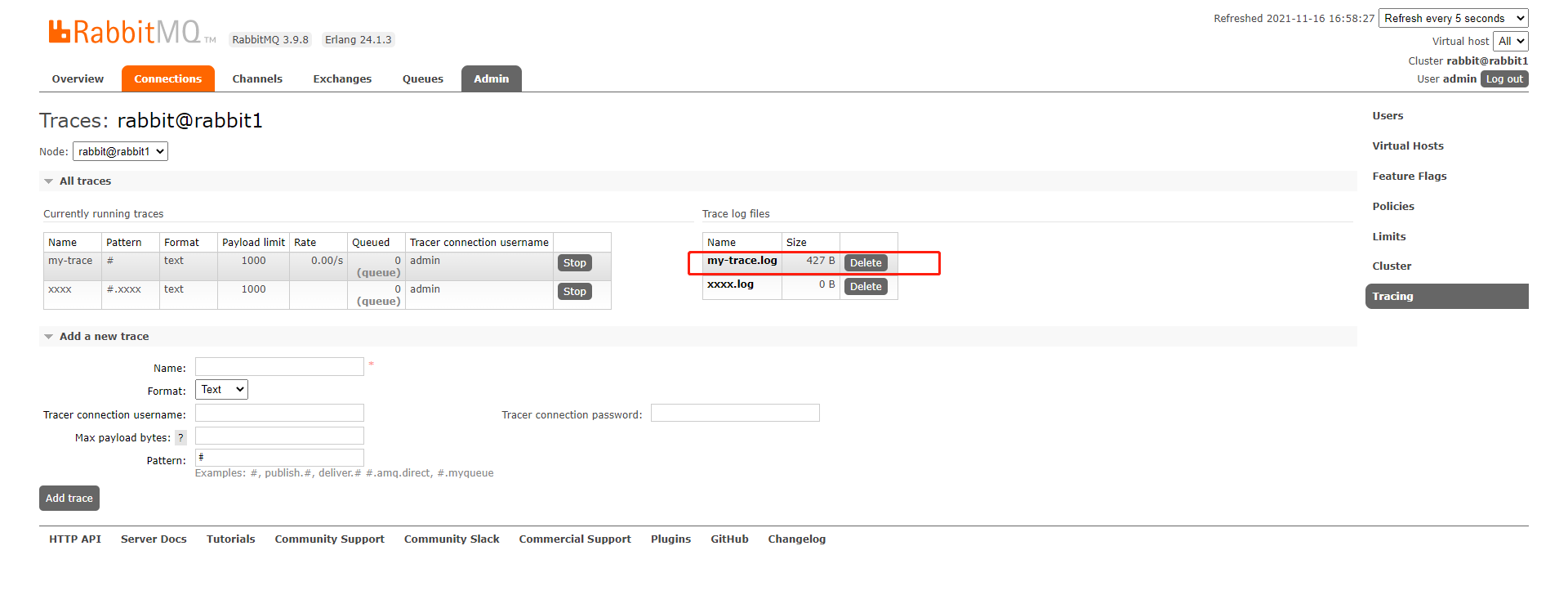
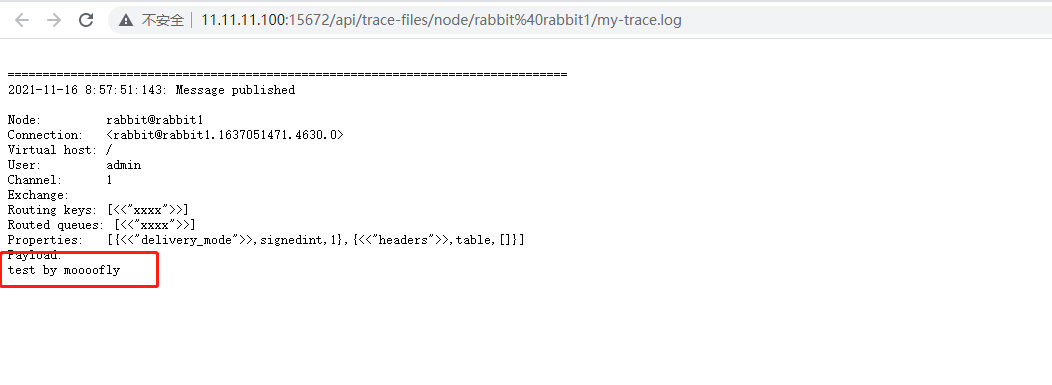
结论
折腾了这么多,结论如下
- 针对 tracing 功能的使用,其实完全可以跳过 firehose 这个点,这样就可以避免使用 rabbitmqctl 命令(该命令要求目标 node 必须处于 running 状态)
- 当基于 rabbitmq-plugins 命令(或 enabled_plugins 配置文件)使能插件后,后续可以直接通过 HTTP API 达成“在创建 trace 规则的时候自动使能 tracing 功能”和“在删除最后一个 trace 规则的时候自动去使能 tracing 规则”的效果
- 创建 trace 规则的动作,不应该放入 RabbitMQ 的启动脚本之中,更合理的实现,应该是有一个外部的服务,负责确认 RabbitMQ 是否已经处于正常运行状态,之后再完成各种规则的添加(已经其他需要完成的额外操作);
- 最后,官方已经非常明确的说了“tracing 功能不适合在生产环境中使用,可能导致 66% 左右的性能损耗”,然而,我们依然在这样用,并且不确定还会这样用多久,how pathetic ~
原创不易,添加关注,点赞,在看,分享是最好的支持, 谢谢~
更多精彩内容,欢迎关注微信公众号 西风冷楼阙

|
- 上一条: 你真的懂Redis的5种基本数据结构吗? 2021-11-22
- 下一条: 🏆【Alibaba中间件技术系列】「RocketMQ技术专题」让我们一起实践RocketMQ的服务搭建及配置操作 2021-11-22
- 【原创】RabbitMQ 之殇:auto-delete 怎么了 2021-11-08
- RabbitMQ 3.9.0 发布,支持 Erlang 24 并引入 Streams 数据结构 2021-07-28
- 四种策略确保 RabbitMQ 消息发送可靠性!你用哪种? 2021-08-10
- 浪潮云溪分布式数据库 Tracing(二)—— 源码解析 2022-07-07
- Kafka和RabbitMQ有哪些区别,各自适合什么场景? 2022-01-06








